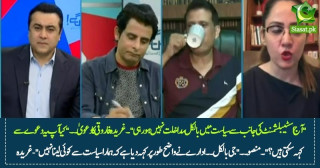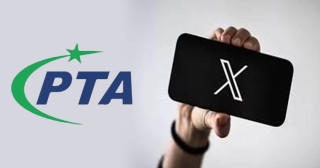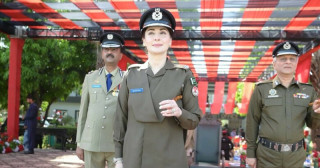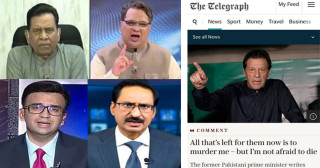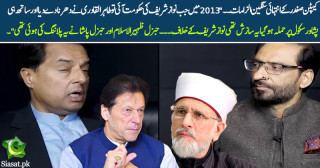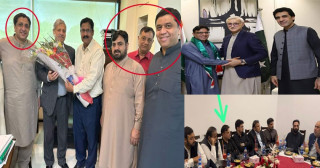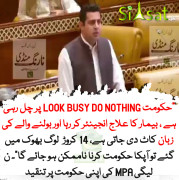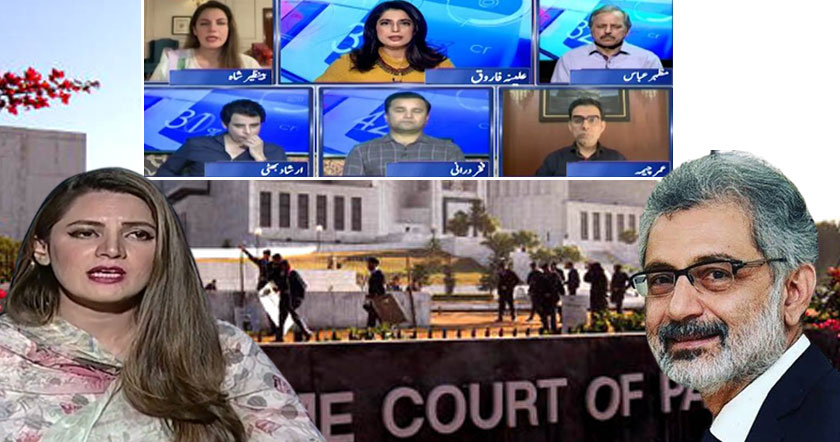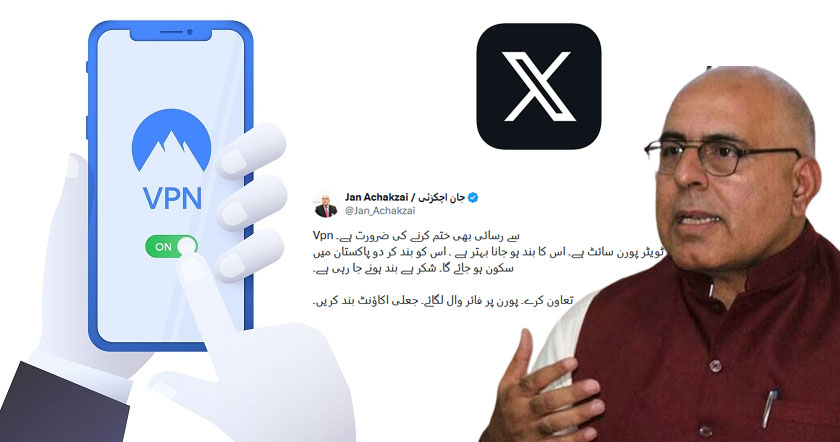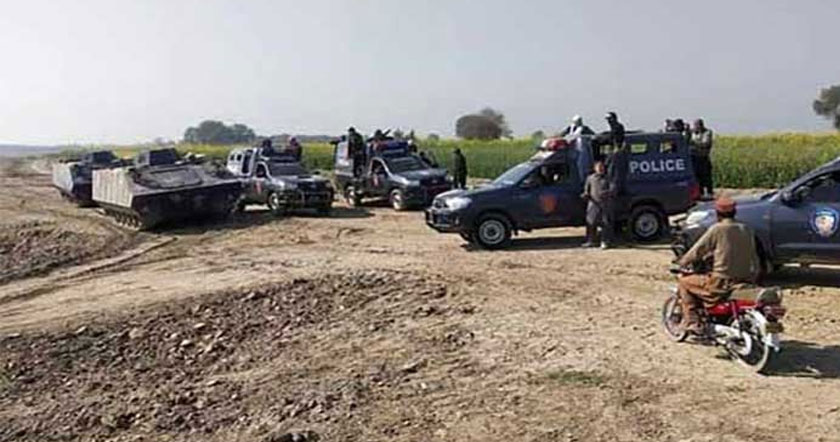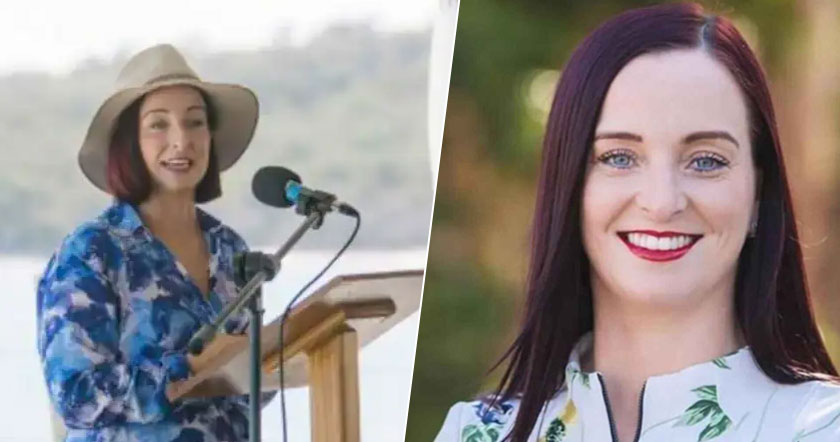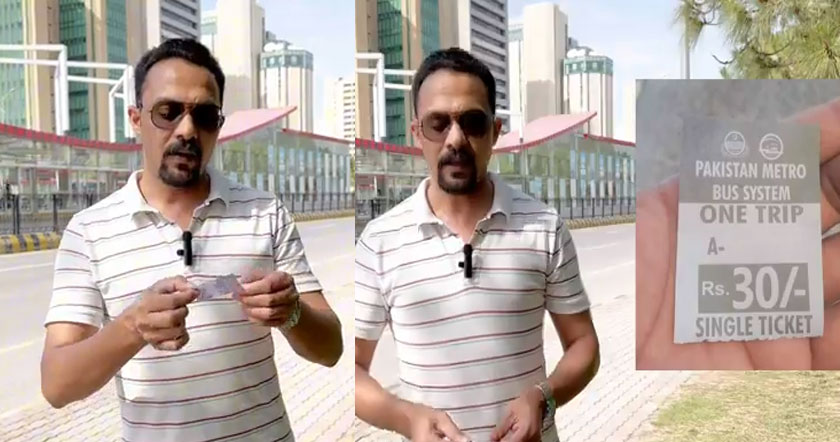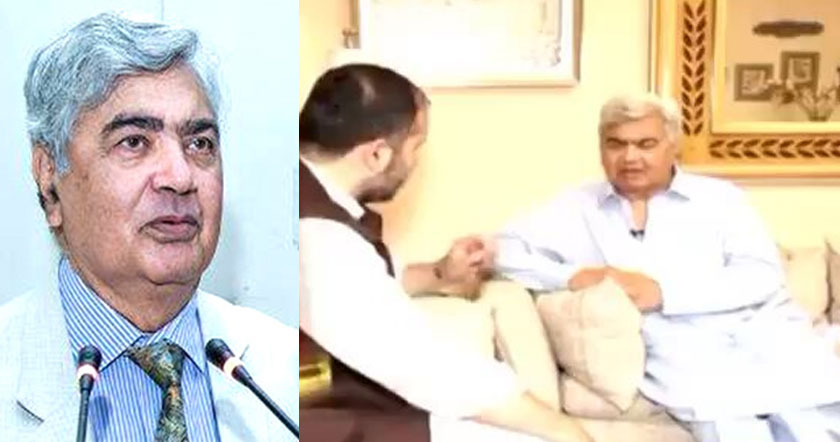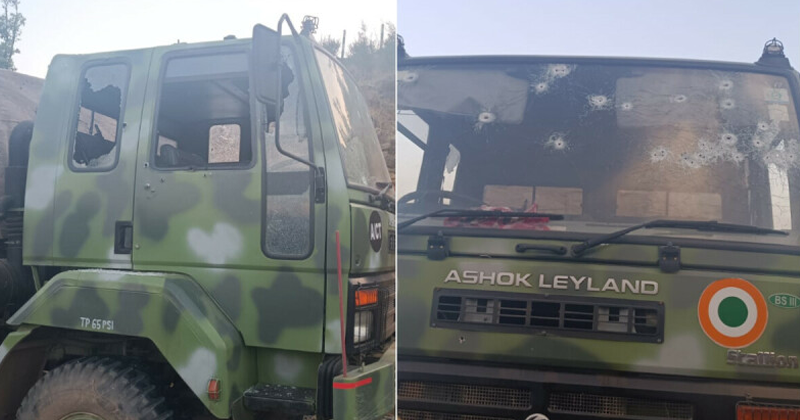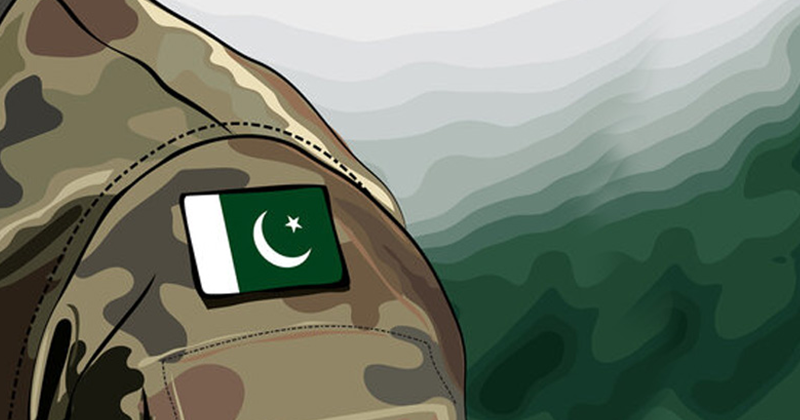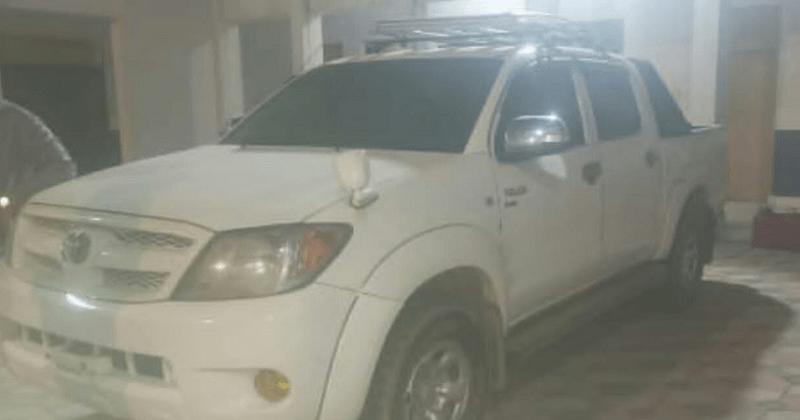http://www.thefridaytimes.com/beta/tft/article.php?issue=20110617&page=2
Comment
 By Khaled Ahmed
By Khaled Ahmed

Murdered journalist's findings show Al Qaeda is winning in nuclear Pakistan more effectively than in Somalia and Yemen
Saleem Shahzad, Al Qaeda and ISI
39 46 following conclusions:
following conclusions:
1) It is Al Qaeda rather than the Taliban who plan militant attacks in Pakistan and that the Taliban execute no operations without the permission of Al Qaeda; 2) Jihadi organisations are subservient to Al Qaeda at the same time as some are also extensions of the Pakistan Army; 3) TTP was shaped by Al Qaeda through Uzbek warlord Tahir Yuldashev after the 2007 Lal Masjid affair; 4) 'Retired' army officers earlier handling proxy jihad defected to Al Qaeda but continued to use contacts within the military on behalf of Al Qaeda; 5) Benazir was killed by Al Qaeda and not Baitullah Mehsud; he was merely an instrument; 6) Mumbai was done by Al Qaeda through former Pakistan Army officers with help from Lashkar-e-Tayba (LeT) without the knowledge of the ISI despite the fact that LeT was on ISI's leash; 7) Army officers or freedom fighters trained by army for Kashmir jihad spearheaded Al Qaeda's war against Pakistan Army; 8) Islamic radicalisation of Pakistani society and media mixed with fear of being assassinated by Al Qaeda agents - who include ex-army officers - have tilted the balance of power away from the state of Pakistan to Al Qaeda; 9) Punjabi Taliban are under Haqqani Network which is supposed to be aligned with Pakistan Army; 10) Pakistan Army has ex-officers in Al Qaeda as well as serving officers collaborating with these ex-officers.


 Saleem Shahzad, who enjoyed the confidence of many Al Qaeda militants and never betrayed their whereabouts, writes: 'There were at least 600,000 youths there since 1979. At least 100,000 Pakistanis were active members or different Jihadi cadres. Over 1 million students were enrolled in various Islamic seminaries, and there were several hundred thousand supporters of Pakistan's Islamic religious parties. The main handler of the Afghan Jihad against the Soviets had been Pakistan's army, which itself was not immune to the influence of radicalism. Several army officers had pledged their allegiance (bait) to different Jihadi spiritual leaders, including Maulana Akram Awan of Chakwal. These groups were known in the Pakistan Army as pir bhai groups. Although General Pervez Musharraf had purged some of these elements from the Pakistan Army after 9/11, including his very close friend, the then deputy chief of army staff, Lt Gen Muzaffar Usmani, he was unable to completely eradicate the radical tendency, which had become deep-rooted in Pakistan's security services during the period from 1979 to 2001' (p. 9).
Saleem Shahzad, who enjoyed the confidence of many Al Qaeda militants and never betrayed their whereabouts, writes: 'There were at least 600,000 youths there since 1979. At least 100,000 Pakistanis were active members or different Jihadi cadres. Over 1 million students were enrolled in various Islamic seminaries, and there were several hundred thousand supporters of Pakistan's Islamic religious parties. The main handler of the Afghan Jihad against the Soviets had been Pakistan's army, which itself was not immune to the influence of radicalism. Several army officers had pledged their allegiance (bait) to different Jihadi spiritual leaders, including Maulana Akram Awan of Chakwal. These groups were known in the Pakistan Army as pir bhai groups. Although General Pervez Musharraf had purged some of these elements from the Pakistan Army after 9/11, including his very close friend, the then deputy chief of army staff, Lt Gen Muzaffar Usmani, he was unable to completely eradicate the radical tendency, which had become deep-rooted in Pakistan's security services during the period from 1979 to 2001' (p. 9).
The Mumbai operation was the revival of an old ISI plan to deflect the Pakistan Army away from Waziristan and get it to fight India instead. Mullah Fazlullah and Baitullah Mehsud announced that they would fight alongside the armed forces in an India-Pakistan war, and Gen Pasha confirmed this in his briefing to reporters when he called them Pakistan's strategic assets
Al Qaeda bent its principles constantly to take more allies on board. One was Lashkar-e-Jhangvi (LJ): 'Slowly and gradually this strategy began to work, and brought thousands of new recruits into the Al Qaeda fold. Among them were two well-known brothers, Dr Akmal Waheed and Dr Arshad Waheed, from Karachi who were now linked to Al Qaeda through Jundullah. Dr Arshad Waheed was later killed in Wana in South Waziristan in a CIA drone strike, and soon afterwards Al Qaeda's media wing Al Sahab released a documentary on his life and exploits to inspire the younger generation. Subsequently several army officers joined the Al-Qaeda cadre' (p. 9).
Radicalisation was facilitated by Jamaat-e-Islami: 'Its student wing had been formed in the 1948 as the offshoot of Jamaat-e-Islami, and by the 1970s it dominated all the country's major educational institutions, including the University of Karachi, University of Punjab, and University of Peshawar. Most of the middle-class members of Pakistan's leadership had belonged to the IJT as students, including Pakistan's ambassador to the United States, Husain Haqqani, Pakistan Muslim League leaders Javed Hashmi and Ehsan Iqbal, Pakistani law minister Dr Babar Awan, and almost 80 percent of Urdu-language newspaper and electronic media opinion writers and television talk show anchors in Pakistan' (p. 10).
Uzbeks that Al Qaeda brought to Waziristan were critical in forming the violent mood of the militants: 'Tahir Yuldashev played a key role in the recruiting of such tribal militants as Abdullah Mehsud. Yuldashev headed an Uzbek force of 2,500 men. The Uzbeks were to give the Pakistani militants lessons in brutality to establish a reign of terror: their tactics included routinely slitting the throats of their foes' (p. 13).


 Al Qaeda's central hero was Captain Khurram Ashiq of the Pakistan Army who was followed by his brother Major Haroon Ashiq to become Al Qaeda's hand that wielded the sword: Khurram was an assault commander of the elite anti-terrorist Zarrar Coy from Pakistan's Special Service Group (SSG) in 2001 when he flipped after 9/11. Because of his Salafi background he was shaped into a warrior by LeT. He wrote to Saleem Shahzad about his brother too. 'Major Haroon Ashiq hung up his boots right after 9/11. On his release from service, he joined LeT. One of my unit officers Major Abdul Rahman also followed suit. I joined the outfit soon after, without caring for the consequences' (p. 83).
Al Qaeda's central hero was Captain Khurram Ashiq of the Pakistan Army who was followed by his brother Major Haroon Ashiq to become Al Qaeda's hand that wielded the sword: Khurram was an assault commander of the elite anti-terrorist Zarrar Coy from Pakistan's Special Service Group (SSG) in 2001 when he flipped after 9/11. Because of his Salafi background he was shaped into a warrior by LeT. He wrote to Saleem Shahzad about his brother too. 'Major Haroon Ashiq hung up his boots right after 9/11. On his release from service, he joined LeT. One of my unit officers Major Abdul Rahman also followed suit. I joined the outfit soon after, without caring for the consequences' (p. 83).
For Captain Khurram faith came before country. While on a UN mission in Sierra Leone he clearly demonstrated it: 'Khurram built a mosque and a Madrassa in Sierra Leone, despite the opposition of his commander, Brigadier Ahmad Shuja Pasha, later chief of the ISI' (p. 85). Both brothers had joined the LeT, but had soon 'realised that the LET was just an extension of Pakistan's armed forces' (p. 86).
To clear the equipment he bought for Al Qaeda from China through customs, Maj (r) Haroon called on his friend Capt Farooq, who was President Musharraf's security officer. Farooq went to the airport in the president's official car and received Haroon at the immigration counter
Haroon read classical Muslim academics like Imam Ibn Taymiyya, Ibn-e-Khaldun and Muhammad Bin Abdul Wahhab. Among modern-day scholars he studied the works of the Muslim Brotherhood ideologue Syed Qutb, as well as the founder of the Jamaat-e-Islami Pakistan, Syed Abul Ala Maududi' (p. 86). Haroon then severed his ties with the Kashmiri struggle and move to North Waziristan with his family. Khurram and Rahman then went to the Afghan province of Helmand in 2007 (p. 87) where Khurram was martyred, after which Rehman joined Haroon in Al Qaeda, becoming the lynchpin of the Mumbai attack in 2008.
As an Al Qaeda terrorist, Haroon enjoyed contacts inside the army: 'Haroon developed a silencer for the AK-47. This became an essential component of Al Qaeda's special guerrilla operations. He then visited China to procure night vision glasses. The biggest task was to clear them through the customs in Pakistan, Haroon called on his friend Captain Farooq, who was President Musharraf's security officer. Farooq went to the airport in the president's official car and received Haroon at the immigration counter. In the presence of Farooq, nobody dared touch Haroon's luggage, and the night vision glasses arrived in Pakistan without any hassle [Farooq was a member of the Hizbut Tahrir, a fact discovered by the military intelligence as late as nine months after his posting as Musharraf's security officer. After being spotted, he was briefly arrested and then retired from the Pakistan Army]' (p. 88).
Al Qaeda targeted NATO supplies through Haroon in 2008: 'Haroon travelled through North Waziristan to Karachi. When night fell, he stayed in army messes in the countryside. Being an ex-army officer he was allowed that facility. He spoke English and Urdu with an unmistakable military accent' (p. 92). He took revenge on Major General Ameer Faisal Alavi because the latter had killed a lot of Al Qaeda men - including Abdur Rehman Kennedy - as leader of a Pakistan Army assault on Angor Adda in North Waziristan. Haroon ambushed Alavi in Islamabad 'jumping out of his car and killing Alavi with his army revolver' (p. 93). Haroon believed in the Ghazwa-e-Hind (Battle for India) hadith and thought End of the World was near, and the advent of the Mahdi was at hand with the help of the armies of Khurasan (Afghanistan-Pakistan) (p. 200).
Haroon is now in Adiala jail in Rawalpindi after failing to kidnap an Ahmadi, Sarwar Khan. (The police officer in Adiala jail told Saleem Shahzad he had started admiring his prisoner.) In custody he admitted to killing Major General Alavi and kidnapping Hindu filmmaker Satish Anand with the help of one Major Basit from Karachi. After he discovered that Anand had no money to give he released him on orders from Al Qaeda's Ilyas Kashmiri 'if he embraced Islam' which Anand immediately did. Later Al Qaeda decided that to refill its empty coffers it will abduct only non-Muslims, in particular, Ahmadis. (A 2011 kidnapping of an Ahmadi in Rawalpindi happened just a little ahead of the time of writing - KA.)
The Mumbai operation was actually the revival of an old ISI plan. The idea was to deflect the Pakistan Army away from Waziristan and get it to fight India instead. This nearly succeeded: 'Pakistan's militant leaders Mullah Fazlullah and Baitullah Mehsud announced that they would fight alongside Pakistan's armed forces in an India-Pakistan war, and the director general of ISI, Lt Gen Ahmad Shuja Pasha, confirmed this understanding in his briefing to national and foreign correspondents, when he called Fazlullah and Baitullah Mehsud Pakistan's strategic assets' (p. 95).
Saleem saw Al Qaeda busily pursuing the goal of weaning Pakistan away from the West with violence and ideology. Pakistan's own teleology of moving from mild to harsh Islam across its history helped. He saw Al Qaeda achieving the following objective: 'Pressure on the ruling Muslim elites and the Muslim masses to break their alliance with the West and support the Islamists' cause of a global struggle for the freedom of occupied Muslim lands and establishment of a Global Caliphate' (p. 125).
The joint declaration of the Pakistani Parliament and the subsequent statement issued by the Pakistan Army on 9 June 2011 seem to indicate that Al Qaeda is winning in nuclear Pakistan more effectively than in Somalia and Yemen.
Comments (1 comments)
well, a lot of dangerous information had collected by Saleem Shahzad. And it supports what Khaled Ahmed (my fav writer) has written for ages.
Comment

Military accountability

Murdered journalist's findings show Al Qaeda is winning in nuclear Pakistan more effectively than in Somalia and Yemen
Saleem Shahzad, Al Qaeda and ISI
39 46
 following conclusions:
following conclusions:1) It is Al Qaeda rather than the Taliban who plan militant attacks in Pakistan and that the Taliban execute no operations without the permission of Al Qaeda; 2) Jihadi organisations are subservient to Al Qaeda at the same time as some are also extensions of the Pakistan Army; 3) TTP was shaped by Al Qaeda through Uzbek warlord Tahir Yuldashev after the 2007 Lal Masjid affair; 4) 'Retired' army officers earlier handling proxy jihad defected to Al Qaeda but continued to use contacts within the military on behalf of Al Qaeda; 5) Benazir was killed by Al Qaeda and not Baitullah Mehsud; he was merely an instrument; 6) Mumbai was done by Al Qaeda through former Pakistan Army officers with help from Lashkar-e-Tayba (LeT) without the knowledge of the ISI despite the fact that LeT was on ISI's leash; 7) Army officers or freedom fighters trained by army for Kashmir jihad spearheaded Al Qaeda's war against Pakistan Army; 8) Islamic radicalisation of Pakistani society and media mixed with fear of being assassinated by Al Qaeda agents - who include ex-army officers - have tilted the balance of power away from the state of Pakistan to Al Qaeda; 9) Punjabi Taliban are under Haqqani Network which is supposed to be aligned with Pakistan Army; 10) Pakistan Army has ex-officers in Al Qaeda as well as serving officers collaborating with these ex-officers.



The Mumbai operation was the revival of an old ISI plan to deflect the Pakistan Army away from Waziristan and get it to fight India instead. Mullah Fazlullah and Baitullah Mehsud announced that they would fight alongside the armed forces in an India-Pakistan war, and Gen Pasha confirmed this in his briefing to reporters when he called them Pakistan's strategic assets
Al Qaeda bent its principles constantly to take more allies on board. One was Lashkar-e-Jhangvi (LJ): 'Slowly and gradually this strategy began to work, and brought thousands of new recruits into the Al Qaeda fold. Among them were two well-known brothers, Dr Akmal Waheed and Dr Arshad Waheed, from Karachi who were now linked to Al Qaeda through Jundullah. Dr Arshad Waheed was later killed in Wana in South Waziristan in a CIA drone strike, and soon afterwards Al Qaeda's media wing Al Sahab released a documentary on his life and exploits to inspire the younger generation. Subsequently several army officers joined the Al-Qaeda cadre' (p. 9).
Radicalisation was facilitated by Jamaat-e-Islami: 'Its student wing had been formed in the 1948 as the offshoot of Jamaat-e-Islami, and by the 1970s it dominated all the country's major educational institutions, including the University of Karachi, University of Punjab, and University of Peshawar. Most of the middle-class members of Pakistan's leadership had belonged to the IJT as students, including Pakistan's ambassador to the United States, Husain Haqqani, Pakistan Muslim League leaders Javed Hashmi and Ehsan Iqbal, Pakistani law minister Dr Babar Awan, and almost 80 percent of Urdu-language newspaper and electronic media opinion writers and television talk show anchors in Pakistan' (p. 10).
Uzbeks that Al Qaeda brought to Waziristan were critical in forming the violent mood of the militants: 'Tahir Yuldashev played a key role in the recruiting of such tribal militants as Abdullah Mehsud. Yuldashev headed an Uzbek force of 2,500 men. The Uzbeks were to give the Pakistani militants lessons in brutality to establish a reign of terror: their tactics included routinely slitting the throats of their foes' (p. 13).



For Captain Khurram faith came before country. While on a UN mission in Sierra Leone he clearly demonstrated it: 'Khurram built a mosque and a Madrassa in Sierra Leone, despite the opposition of his commander, Brigadier Ahmad Shuja Pasha, later chief of the ISI' (p. 85). Both brothers had joined the LeT, but had soon 'realised that the LET was just an extension of Pakistan's armed forces' (p. 86).
To clear the equipment he bought for Al Qaeda from China through customs, Maj (r) Haroon called on his friend Capt Farooq, who was President Musharraf's security officer. Farooq went to the airport in the president's official car and received Haroon at the immigration counter
Haroon read classical Muslim academics like Imam Ibn Taymiyya, Ibn-e-Khaldun and Muhammad Bin Abdul Wahhab. Among modern-day scholars he studied the works of the Muslim Brotherhood ideologue Syed Qutb, as well as the founder of the Jamaat-e-Islami Pakistan, Syed Abul Ala Maududi' (p. 86). Haroon then severed his ties with the Kashmiri struggle and move to North Waziristan with his family. Khurram and Rahman then went to the Afghan province of Helmand in 2007 (p. 87) where Khurram was martyred, after which Rehman joined Haroon in Al Qaeda, becoming the lynchpin of the Mumbai attack in 2008.
As an Al Qaeda terrorist, Haroon enjoyed contacts inside the army: 'Haroon developed a silencer for the AK-47. This became an essential component of Al Qaeda's special guerrilla operations. He then visited China to procure night vision glasses. The biggest task was to clear them through the customs in Pakistan, Haroon called on his friend Captain Farooq, who was President Musharraf's security officer. Farooq went to the airport in the president's official car and received Haroon at the immigration counter. In the presence of Farooq, nobody dared touch Haroon's luggage, and the night vision glasses arrived in Pakistan without any hassle [Farooq was a member of the Hizbut Tahrir, a fact discovered by the military intelligence as late as nine months after his posting as Musharraf's security officer. After being spotted, he was briefly arrested and then retired from the Pakistan Army]' (p. 88).
Al Qaeda targeted NATO supplies through Haroon in 2008: 'Haroon travelled through North Waziristan to Karachi. When night fell, he stayed in army messes in the countryside. Being an ex-army officer he was allowed that facility. He spoke English and Urdu with an unmistakable military accent' (p. 92). He took revenge on Major General Ameer Faisal Alavi because the latter had killed a lot of Al Qaeda men - including Abdur Rehman Kennedy - as leader of a Pakistan Army assault on Angor Adda in North Waziristan. Haroon ambushed Alavi in Islamabad 'jumping out of his car and killing Alavi with his army revolver' (p. 93). Haroon believed in the Ghazwa-e-Hind (Battle for India) hadith and thought End of the World was near, and the advent of the Mahdi was at hand with the help of the armies of Khurasan (Afghanistan-Pakistan) (p. 200).
Haroon is now in Adiala jail in Rawalpindi after failing to kidnap an Ahmadi, Sarwar Khan. (The police officer in Adiala jail told Saleem Shahzad he had started admiring his prisoner.) In custody he admitted to killing Major General Alavi and kidnapping Hindu filmmaker Satish Anand with the help of one Major Basit from Karachi. After he discovered that Anand had no money to give he released him on orders from Al Qaeda's Ilyas Kashmiri 'if he embraced Islam' which Anand immediately did. Later Al Qaeda decided that to refill its empty coffers it will abduct only non-Muslims, in particular, Ahmadis. (A 2011 kidnapping of an Ahmadi in Rawalpindi happened just a little ahead of the time of writing - KA.)
The Mumbai operation was actually the revival of an old ISI plan. The idea was to deflect the Pakistan Army away from Waziristan and get it to fight India instead. This nearly succeeded: 'Pakistan's militant leaders Mullah Fazlullah and Baitullah Mehsud announced that they would fight alongside Pakistan's armed forces in an India-Pakistan war, and the director general of ISI, Lt Gen Ahmad Shuja Pasha, confirmed this understanding in his briefing to national and foreign correspondents, when he called Fazlullah and Baitullah Mehsud Pakistan's strategic assets' (p. 95).
Saleem saw Al Qaeda busily pursuing the goal of weaning Pakistan away from the West with violence and ideology. Pakistan's own teleology of moving from mild to harsh Islam across its history helped. He saw Al Qaeda achieving the following objective: 'Pressure on the ruling Muslim elites and the Muslim masses to break their alliance with the West and support the Islamists' cause of a global struggle for the freedom of occupied Muslim lands and establishment of a Global Caliphate' (p. 125).
The joint declaration of the Pakistani Parliament and the subsequent statement issued by the Pakistan Army on 9 June 2011 seem to indicate that Al Qaeda is winning in nuclear Pakistan more effectively than in Somalia and Yemen.
Comments (1 comments)
well, a lot of dangerous information had collected by Saleem Shahzad. And it supports what Khaled Ahmed (my fav writer) has written for ages.




